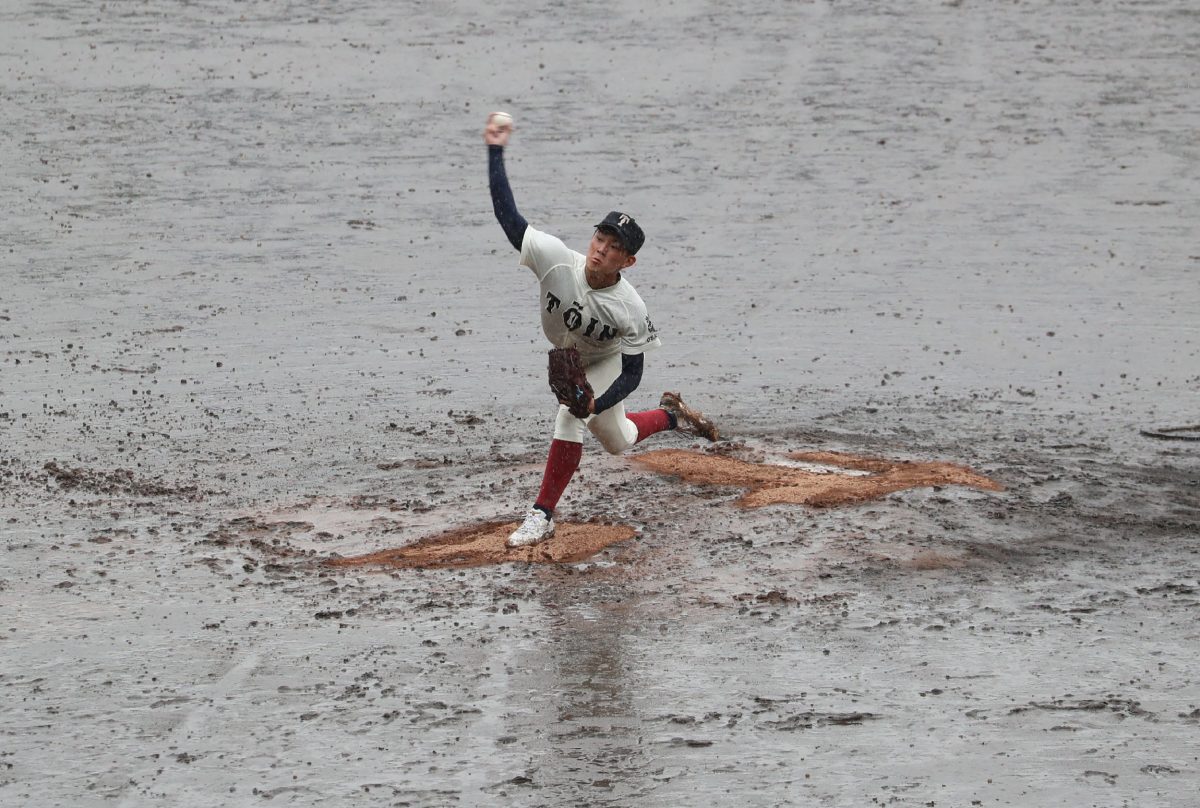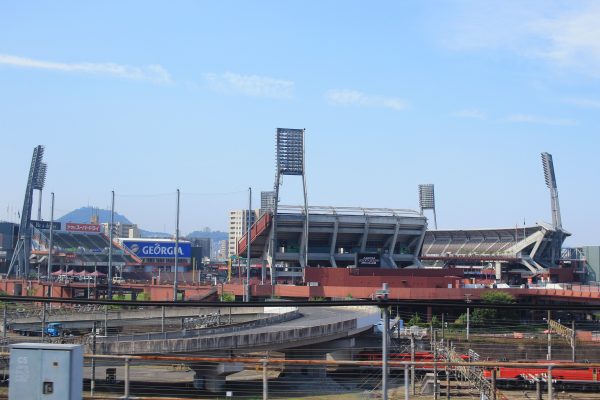



Tokyo, Japan – Of the 12 primary stadiums hosting Nippon Professional Baseball teams, which ones stand out as the most unique? Here are my picks for five particularly interesting NPB parks.
Mazda Zoom-Zoom Stadium Hiroshima: Diverse Seating
In 2009, the Carp relocated from Hiroshima Municipal Stadium, which was built near the Atomic Bomb Dome, to Mazda Zoom-Zoom Stadium. While it isn’t situated downtown like its predecessor, the park features diverse seating areas with upper deck “performance seats,” close-up views from below the dirt, and BBQ sections. The government of Hiroshima owns a partial share of the stadium. The beautiful views of the mountains and passing trains certainly enhance the experience, too.

#Mazda Zoom-Zoom Stadium Hiroshima
Koshien Stadium: All-Dirt Infield
Often spoken in the same breath as Wrigley Field and Fenway Park, Koshien Stadium is revered as a holy site for Japanese baseball. Inspired by the Polo Grounds, it was constructed in 1924 and now accommodates over 47,000 spectators, making it the largest stadium in NPB. Its all-dirt infield is instantly recognizable to fans worldwide. Koshien hosts the National High School Baseball tournaments each spring and summer, a tradition highlighted in the 2019 documentary Koshien: Japan’s Field of Dreams. Players often take home some of the dirt as a memento of their time on this iconic stage.
Rakuten Seimei Park Miyagi: Ferris Wheel
Despite being home to Japan’s youngest franchise, the Rakuten Eagles, Miyagi Baseball Stadium is the third oldest park in NPB, opening in 1950. It was renovated in 2011 following the devastating Tohoku earthquake and tsunami that delayed the start of the season. A small amusement park with a Ferris wheel is integrated into left field, enabling cool views of Sendai city and the ballgame. The stadium has the lowest average attendance and the second smallest capacity in NPB, but it’s a great park with modern features and even has its own beer label.
Vantelin Dome Nagoya: Giant Walls
The Vantelin Dome is an absolute behemoth of a stadium with 16-foot walls surrounding the entire outfield. It has hosted the Chunichi Dragons since 1997 and is often the topic of discussion among fans who desire the construction of a shorter porch or lowering the walls to make it less pitcher-friendly. In 2022, the Dragons only hit 62 home runs as a team (Munetaka Murakami hit 56 by himself). However, the park has been conquered before. In the 2000s, stars like Tyrone Woods and Kosuke Fukudome consistently put up excellent slugging numbers.
Es Con Field Hokkaido: Modernity
Perhaps the most state-of-the-art stadium in the world, Es Con Field was modeled after Globe Life Field in Arlington and opened in 2023 as the Nippon-Ham Fighters relocated from Sapporo Dome. It has a retractable roof, asymmetrical field, and natural grass, all of which are rare characteristics in Japan. Its triangular roof was inspired by local Hokkaido barns, and it features a wide selection of concessions and restaurants on every floor. Various murals of legendary players like Shohei Ohtani and Yu Darvish are displayed along the walking areas, celebrating the team’s rich history. The outfield side is covered in a 230-foot glass wall for scenic views and natural light, and giant LED screens along the first and third baselines are utilized. Simply put, Es Con Field is a sight to behold.
Bonus!
Mizuho PayPay Dome Fukuoka: Trackman
Thanks to a plethora of advanced sensors around the park, the SoftBank Hawks’ home is the only NPB stadium with public Trackman data (spin rate, exit velocity, etc.) available on broadcasts.
Photo Credit: Osaka Toin Senior High School pitcher Hayato Takenaka throws a pitch in the rain while surrounded by a muddy infield. (Photo by JIJI PRESS / AFP) / Japan OUT (Photo by STR/JIJI PRESS/AFP via Getty Images)